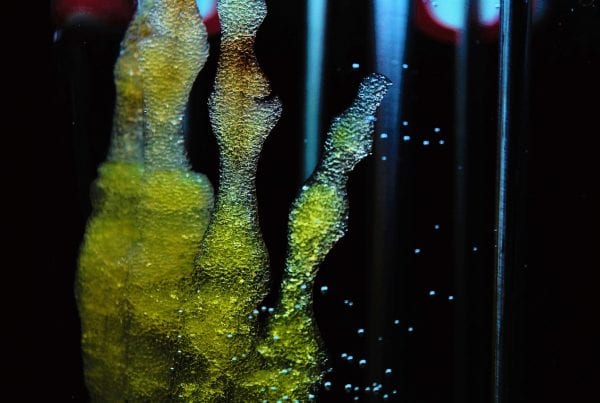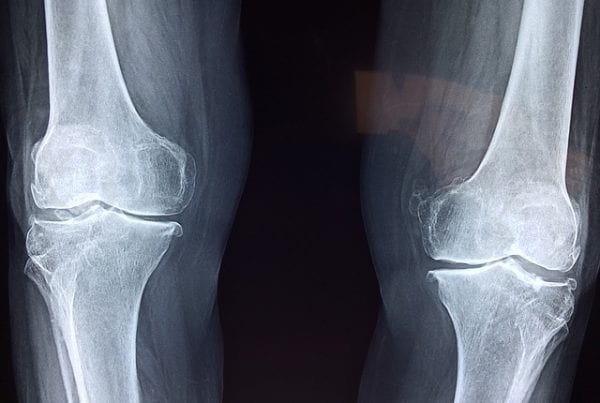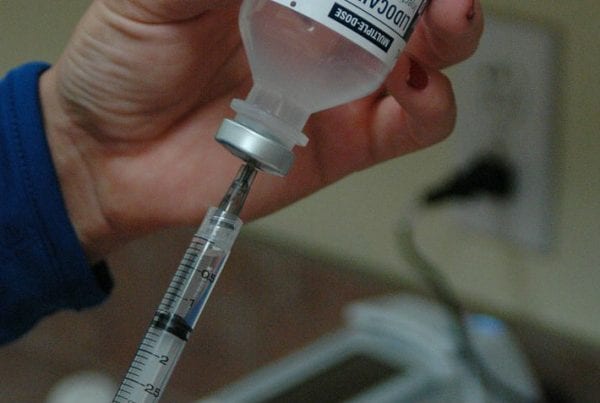Over the years, peptide-based therapy has gained global acceptance among medical practitioners and its everyday users. The highly effective synthesis medication distinguishes itself with its ability to specifically target tissues and other organs in the body and cause changes in cell behaviors to stimulate the healing process.
Naturally, peptides occur throughout the body and are found in every cell. They are made of chains of amino acids, just like proteins. A lack of an adequate amount of peptides in the body usually leads to the inability to perform at your best and may also cause some disorders.
The peptide-based medications such as BPC-157, Body Protection Compound, secreted from natural sources, can be used to restore affected organs in the body that cause premature aging and difficulties in the healing process.
What is BPC-157 (Body Protection Compound)?
BPC-157 (Body Protection Compound) is a supplement extracted from a gastrointestinal protective protein and is very effective in treating different conditions. It primarily helps accelerate musculoskeletal tissue healing and is one of the most popular peptide-based products.
It is a pentadecapeptide made up of 15 amino acids. BPC-157 was discovered in human gastric juice and has been an exceptional treatment option that accelerates the wound and injury healing process, including gastric ulcers, tendons, ligaments, and bone injuries.
It activates the proteinic FAK-paxillin pathway, induces F-actin formation in fibroblasts, and increases the probability of cell survival during oxidative stress. BPC-157 is currently in phase II clinical trials for the treatment of inflammatory bowel disease (IBD). It is also used for skin, ulcer and gut health, drug intoxication, blood pressure, tendon and muscle healing, as well as healing of cuts, burns, and broken bones.
BPC-157 Synthesis
Because the products work by mimicking the natural peptides that occur in the body, they also have the same effects. They are usually referred to as synthetic peptides because they don’t exactly exist in nature but are derived from a protein found in the body.
Just like in other discoveries in medicine, researchers are still working to fully establish how BPC-157 affects changes in the human body. However, based on the current studies, the drug can treat ulcers in the stomach, fistulas, inflammatory and other intestinal damage, inflammatory disorders, organ damage, and bone and joint healing. Its effects aren’t limited to musculoskeletal tissue healing; it is also believed to have some influences on the brain.
How Does BPC-157 (Body Protection Compound) Work?
BPC-157 is made of a chain sequence of amino acids medically known as Gly-Glu-Pro-Pro-Pro-Gly-Lys-Pro-Ala-Asp-Asp-Ala-Gly-Leu-Val, mol wt 1,419. It is a very stable water-soluble composition that can also be taken simultaneously for a better result with noxious agents. Its effects could be noticed in the body within days or weeks its first use.
How to Administer BPC-157
BPC-157 can be taken in different ways, mostly via injection or orally. You may inject it through the veins and directly into the muscle. It can also be taken using the buccal or sublingual method.
Inject Subcutaneously
BPC-157 can be injected into the body using the subcutaneous method, which is the least painful and easiest way. This method involves putting the injection right under the skin. It is ideal for inserting the injection in an area close to the affected part of the body. The subcutaneous method is a relatively easier injection procedure.
All it requires is to clean the intended area with an alcohol swab, pinch it and direct the needle in such a way that it will slip directly underneath the area. Doing this alone can be difficult, and initially it may be useful having someone around to help you. The recommended dosage for subcutaneous delivery of BPC-157 is 250-350 mcg (micrograms) subcutaneously once daily.
Inject Intramuscularly
Another method is intramuscular, i.e. to stab the needle into the muscle. This method is known to be somewhat painful, especially when injected very close to the injured part of the body. Depending on how you can handle needle pain, you may choose this option if you don’t really mind the pain.
This is known to be the most effective of the two injection methods and has a higher level of bioavailability. Before administering BPC-157 intramuscularly, ensure you first clean the part to be injected with an alcohol swab. The recommended dosage for intramuscular is 250-350 mcg as close to the site of injury as possible once daily.
How to Administer BPC-157 Orally
If you don’t want to experience the pain of injecting needles into your body you may try the oral method which is the easiest option. All you need to do is to spray the peptide into your mouth and allow it to stay inside for 90 to 120 seconds before swallowing.
However, administering BPC-157 orally is not as effective as the injection method. Most synthetic peptides don’t easily absorb in the body when taken orally, which is why most researchers use injection in most trials conducted with peptides. It takes many studies to fully ascertain the peptide’s efficacy when taken orally, as there are doubts about whether or not it is absorbed into the bloodstream if used this way. If taken orally, use 250-500 mcg of BPC-157 in 1-2 divided doses.
Buccal Method
Buccal administration is the placing of the drug between your gum and cheek, where it will dissolve and be absorbed into the blood. The recommended BPC-157 dosage for the buccal method is 250-500 mcg between the cheek and gum daily in 1-2 divided doses.
Benefits of BPC-157
The beneficial effects of BPC-157 include the following:
It Accelerates Bone, Tendon and Muscle Healing
Osteoporosis, metabolic aberration, and other bone conditions are often traced to gastrectomy. Treating these conditions usually requires a gastric peptide with osteogenic activity, i.e. derived from bone-forming tissue. BPC-157 is well-known for its effectiveness in this regard, as it accelerates the healing process in the bone and ligaments by promoting improved cell survival and cell migration.
Results from the available studies using rabbits show that the peptide increases the healing of bone defects faster than other treatment options such as conventional surgical procedures.
It Protects the Heart
BPC-157 has several beneficial effects on the heart. It can protect the human vascular system, normalize high and low blood pressure, and shield cells against toxin-induced damage. It has the ability to protect the arteries (vessels carrying blood from the heart) from oxidative stress. Moreover, BPC-157 can cause angiogenesis and vasculogenesis processes as well as stimulate the formation of new blood needed for a healthy heart.
Protects Against NSAID Induced Damages
Indigestion, headaches, dizziness, gut complaints, and drowsiness are some of the common side effects of nonsteroidal anti-inflammatory drugs (NSAIDs).
However, in some cases, NSAIDs lead to adverse effects such as fluid retention and problems in the kidney, liver, and heart. BPC-157 can help protect the brain, gut, and liver against potential damages caused by these drugs, which include aspirin, ibuprofen, and naproxen sodium. BPC-157 can also protect the gut against ulceration from chemotherapy prescriptions. BPC-157 can be combined with NSAIDs to prevent their common side effects.
It Can Treat Irritable Bowel Disease (IDM)
Digestive problems, such as cramping, bloating, diarrhea and belly pain and other IDM syndromes can be treated with the drug. A study aimed to cure esophagogastric anastomosis in rats shows that BPC-157 has the power to rescue sphincter dysfunction and repair gut swelling, especially with a higher dosage.
It Restores The Serotonergic Transport System
BPC-157 can reduce the rate of serotonin synthesis in the dorsal thalamus, hypothalamus, hippocampus, and lateral geniculate body. It also increases serotonin synthesis in the nigrostriatal regions, such as lateral caudate, substantia nigra, nucleus accumbens, and superior olive. Its effects on serotonin can also improve anxiety and depression because it contains a level of antidepressants.
What is the Recommended Dosage for BPC-157?
Just like other medications, the usage and dosage generally depend on the individual and condition it is being used for. However, from the available studies, the best approach is taking a single dosage of 1-10 mcg per kilogram of body weight. Depending on body weight, this will give a sum of 200-850 mcg per day. It may also be taken in a dosage of 250-350 twice per day, which will sum up to 500-700 mcg per day.
Most people who have taken the higher option report that they benefited from it more than the smaller option. Although you may experience some mild reactions when you take the higher dosage, it should only last for a few hours. Any reactions from the dosage that last longer than normal should be reported to your doctor immediately. It is advisable to begin usage with a lower dosage and adjust afterward. If you use a higher dosage and notice any side effects, reduce it and adjust gradually.
How Is BPC-157 Stored?
The recommended temperature when storing BPC-157 in a freezer is -20 degrees Centigrade. The peptides come in lyophilized powder form. During shipping, there will be a short-term temperature change, which shouldn’t affect the drug’s effectiveness and quality. It is a stable product that can be kept at room temperature for up to 28 days.
Before it can be injected, it must be reconstituted, i.e. adding diluents to the lyophilized powder to make it a liquid solution, and once reconstituted, it is stable for 6 months under refrigeration. After reconstitution, its shelf-life will become limited and it will require refrigeration at the appropriate temperature level to keep it stable. Some BPC-157 peptides come in oral capsules that do not need refrigeration, yet must be kept in a cool, dry place.
Does BPC-157 Have Side Effects?
Presently, there are no reported side effects of BPC-157. None of the research conducted has any record of side effects. However, it is recommended that you talk to your doctor to be sure if it is safe depending on your condition.
Also, your doctor will inform you of the appropriate frequency and whether you can use it simultaneously with other drugs if you are on another prescription. While the peptide’s side effects are not well-known, it is not entirely free of the possibility of mild reactions, especially when taken at a high dosage. You may experience some mild headaches, dizziness, and nausea. At the injection site, there may be some discomfort, redness, or bumps, which should only last for one or two hours after injection.
If you experience any pain for a longer period than this, you should consult your doctor. Additionally, if you are allergic or sensitive to certain medications, you should discuss the possible aftermath effects with your doctor before taking the peptide.
How Soon Before I Start Noticing The Effects?
Depending on your conditions, the product may be recommended for weeks, and before completing it, you are expected to start noticing the effects on your body. Its result varies among individual users. For some, its effect is noticed after a few days while for others it takes around two weeks.
How Modern Therapy MD Can Help you with your Peptide Needs
At Modern Therapy, we are committed to improving our patients’ quality of life using cutting edge therapies and techniques. We can provide you with the best peptides in the USA. You can contact us today for your Peptide Needs by filling out this free contact form.



